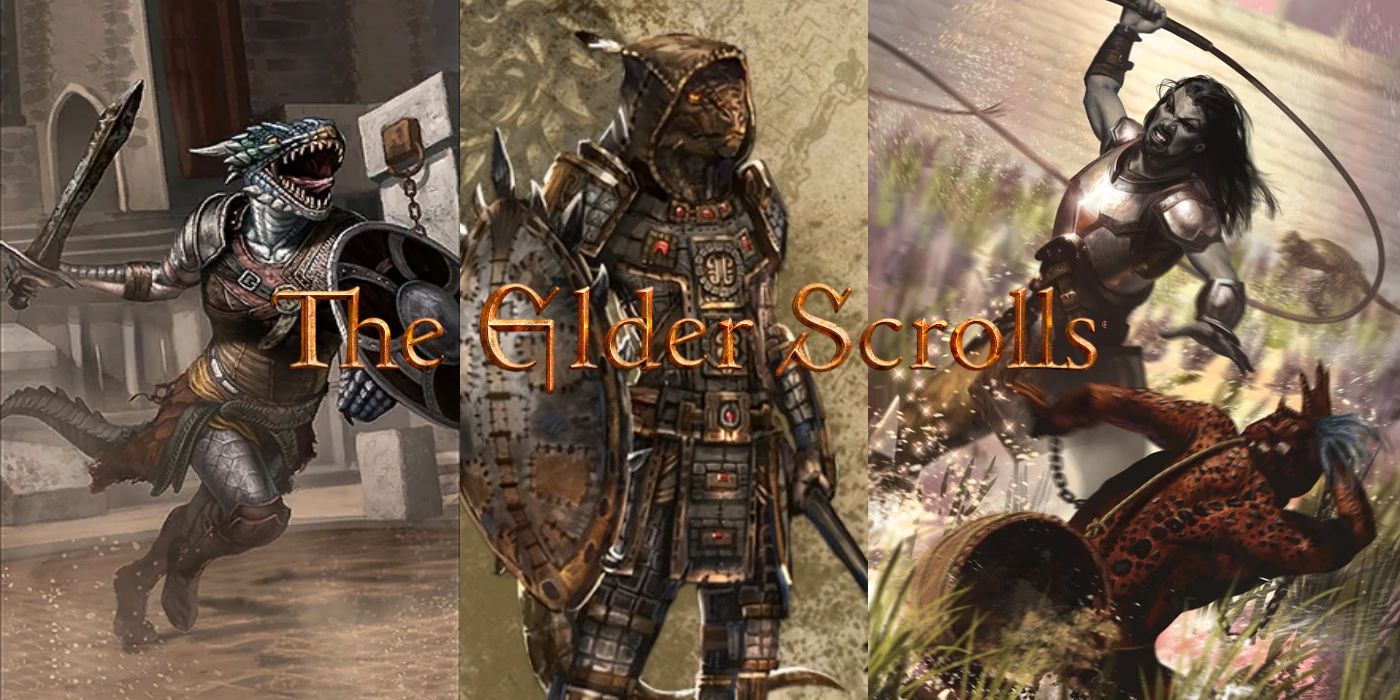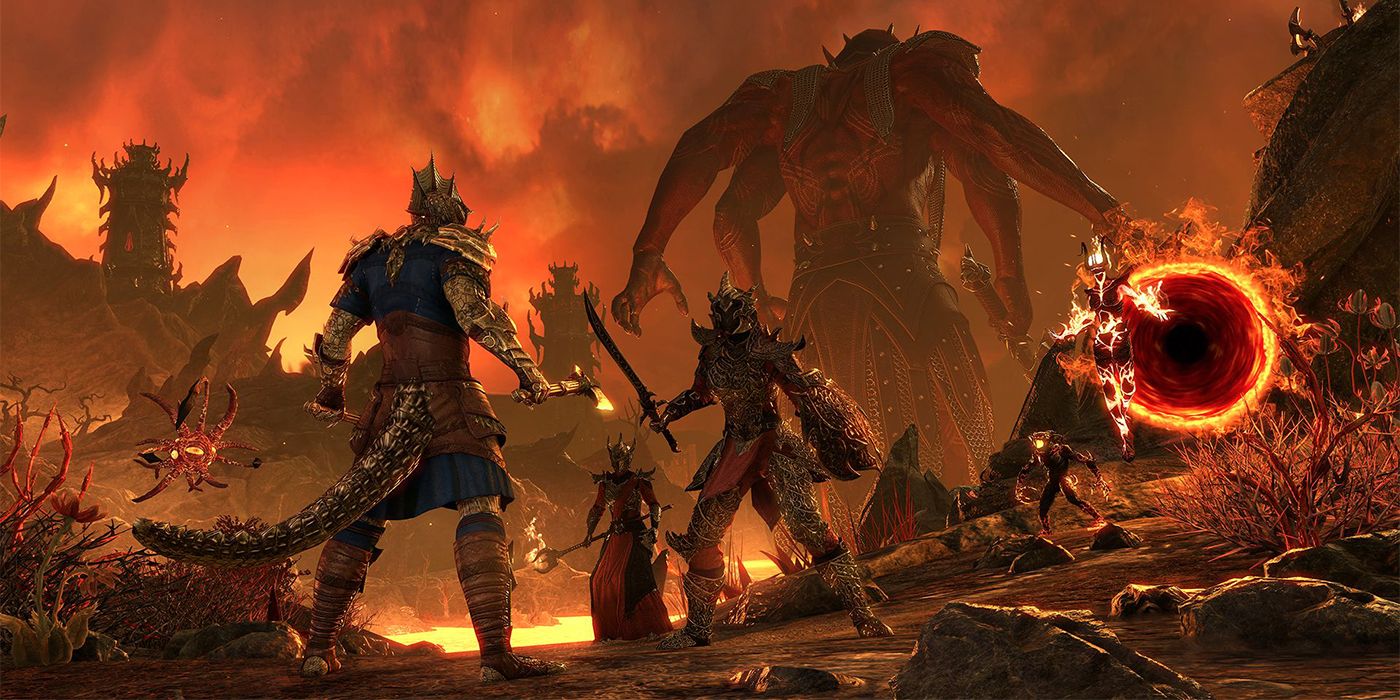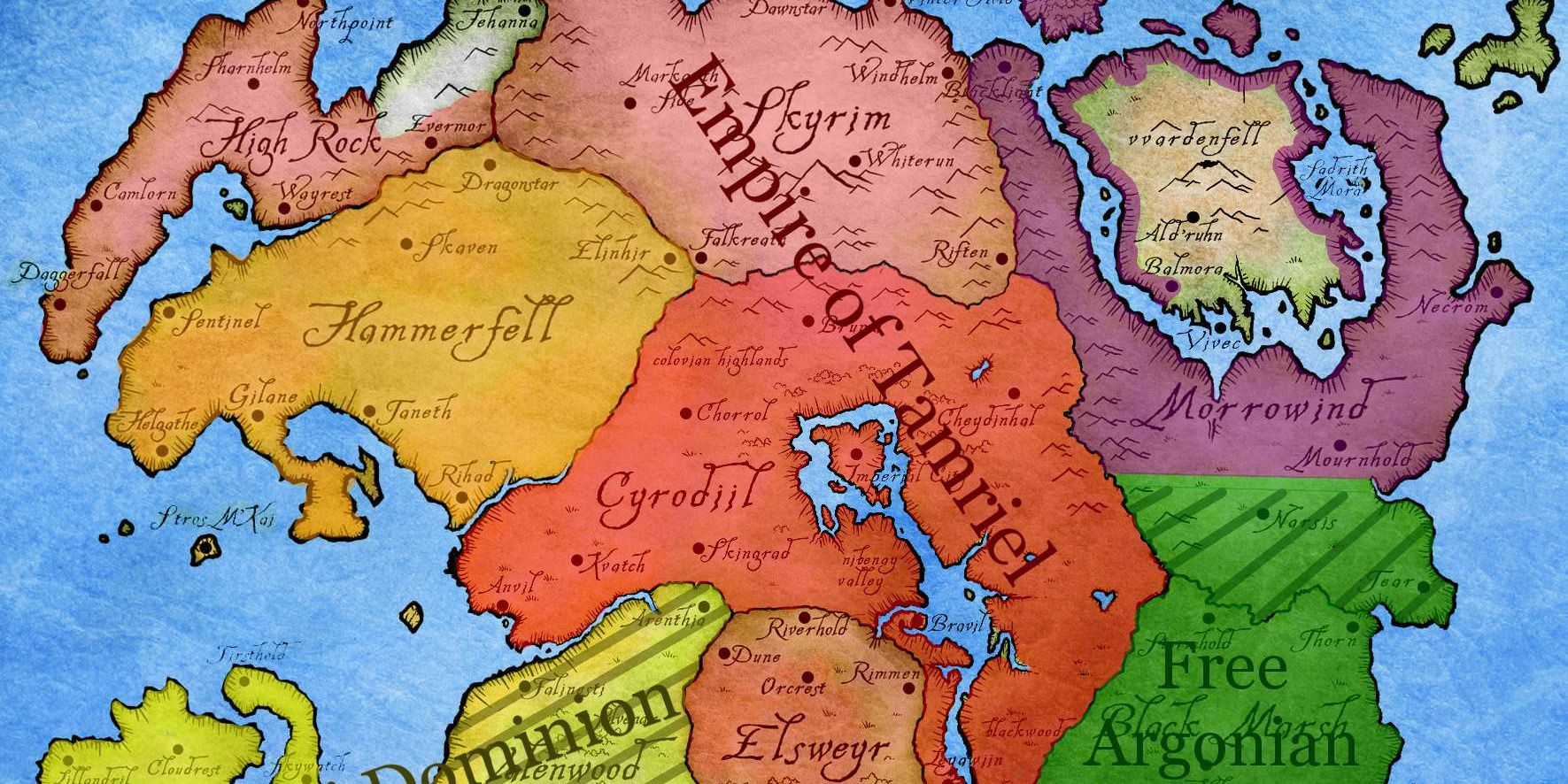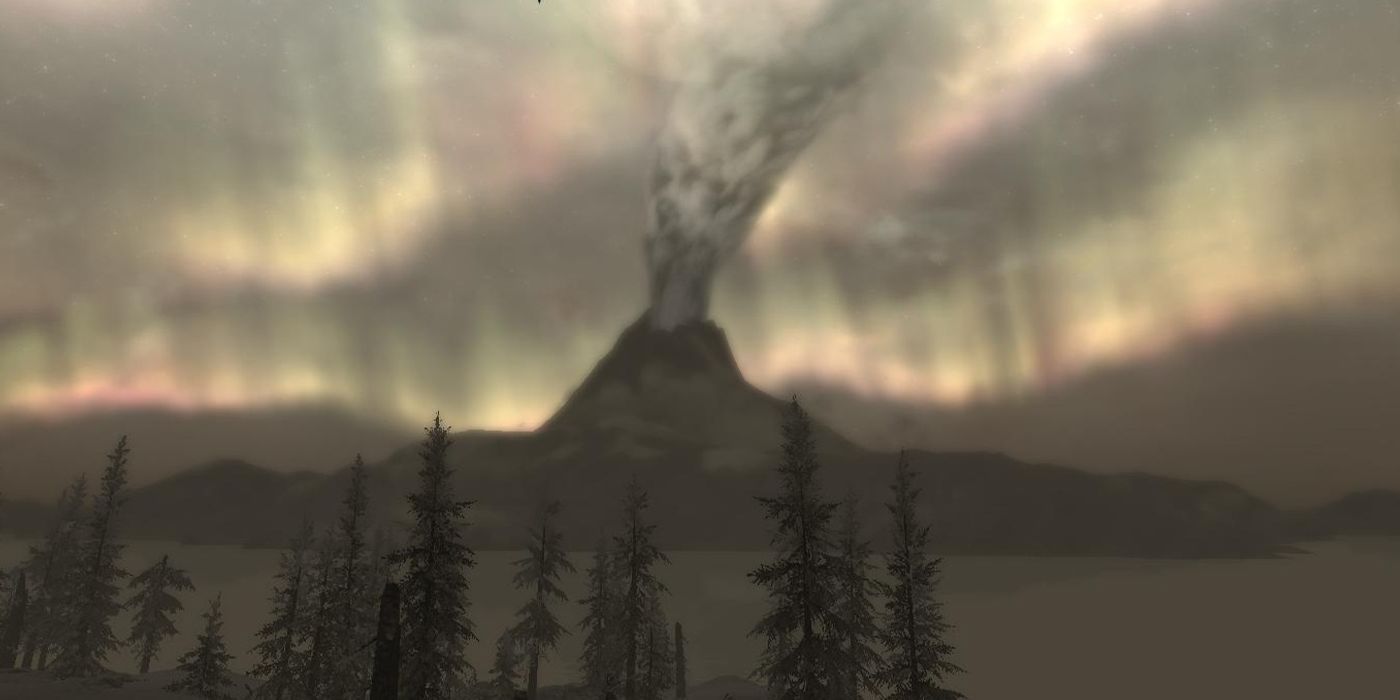While little has been revealed about The Elder Scrolls 6's setting or story, many fans will be hoping to see some of the big changes to Tamriel that were revealed in Skyrim play out even further. The two-hundred-year time jump between the events of Oblivion and Skyrim saw some of the biggest changes come to the continent in the series so far. Before that, the events from Arena to Oblivion had all taken place within half a century.
Skyrim saw the Empire's power significantly reduced following a devastating Great War with the newly re-established Aldmeri Dominion. This saw Hammerfell released as an Imperial Province, Skyrim descend into Civil War, and the White-Gold Concordat outlaw the worship of Talos as the Ninth Divine across the continent. The Great War was far from the only major change to come to Tamriel in that timespan however. To the southwest, the Accession War saw the Argonians invade Morrowind, completely changing the balance of power in the region in a way that could have huge implications for The Elder Scrolls 6.
Black Marsh And the Oblivion Crisis
The Oblivion Crisis engulfed Tamriel at the end of the Third Era. Across the continent, Oblivion Gates opened up, creating doorways to the realm of Mehrunes Dagon, known as the Deadlands. Daedra poured fourth into the world, and the fourth Elder Scrolls game saw the end of an era when Martin Septim sacrificed himself and his dynasty to merge with Akatosh and defeat Mehrunes Dagon within the walls of the Imperial City in Cyrodiil.
While the mortal races of Tamriel ultimately triumphed, the outcome of the Oblivion Crisis proved to be a pyrrhic victory for the Empire. Between the events of Oblivion and Skyrim the Empire's weakened state allowed it to be challenged from all sides, particularly by the Third Aldmeri Dominion. In Black Marsh, however, the Argonians were able to launch a defense so impressive that the Daedra were forced to close thier own Oblivion Gates to stop the Deadlands from being overrun.
The secret behind the success of the Argonians was the Hist, a mysterious race of sentient trees to which the Argonians are intrinsically tied. The Hist were able to warn and organize the Argonians en masse, preventing the sort of chaotic response to the Oblivion Crisis seen in other parts of the Empire. Thanks to the Hist the Argonians were able to organize forces which went through the Oblivion Gates into the Deadlands, not only defending Black Marsh but taking the fight directly to the Daedra.
As a result Black Marsh was far less devastated by the Oblivion Crisis than its neighboring provinces. Morrowind, home of the Dark Elves, suffered far worse than Black Marsh. This allowed the newly victorious and highly organized Argonians to take advantage.
The Invasion of Morrowind
The Argonians and Dark Elves of Tamriel have a hostile history. Throughout Tamriel's history it has been common for Dark Elf forces to cross the border into Black Marsh to take Argonians as slaves, bringing them back to Morrowind. In 3E 396, 37 years before the Oblivion Crisis, the Arnesian War broke out between Black Marsh and Morrowind. A slave revolt against the southern Dunmer Great House of House Dres triggered the war, and eventually it would lead to the annexation of many parts of northern Black Marsh by Morrowind.
During the Oblivion Crisis, many Argonians organized under the banner of a radical new faction, the An-Xileel. Five years into the Fourth Era, the Red Mountain erupted, destroying the Dunmer cities and settlements on the island of Vvardenfell. With the Dunmer still suffering from the double-punch of the Oblivion Crisis and the destruction of Vvardenfell, the An-Xileel invaded Morrowind in 4E 6. This invasion became known as the Accession War.
The Aftermath
Mournhold was sacked by the Argonian forces, who were able to move as far north as the remains of Tel Vos. The Imperial garrisons who might have responded to aid the Dark Elves were cut off by the eruption of the Red Mountain. Eventually, the Dunmer Great House of House Redoran was able to put a stop to the Argonian advance. Due to the eruption of the Red Mountain and the Argonian invasion, Skyrim saw a huge influx of Dark Elf refugees. This prompted the High King to offer them Solstheim as a settlement for them, though Dunmer can still be found throughout Riften, Windhelm, and other Skyrim cities.
Thanks to the Oblivion Crisis, the eruption of the Red Mountain, and the Accession War, the Morrowind that will exist during The Elder Scrolls 6 will likely be completely different to the one seen in The Elder Scrolls 3. By the time of Skyrim, many Argonian clans still live in the south of Morrowind, with frequent skirmishes between them and the houses which used to take their people as slaves.
Some have speculated that the Aldmeri Dominion encouraged the Argonians to invade Morrowind to further weaken the Empire. It has also been speculated that the Hist may have commanded the An-Xileel to invade, and retribution for centuries of slavery seems to be a very likely motivation as well. It's not impossible that all three reasons ultimately played a part in starting the Accession War.
Many fans will be hoping to see the consequences of the Accession War play out in The Elder Scrolls 6. It's possible that, as with Skyrim, the next Elder Scrolls game will make a significant leap forward in time. Whether or not the invasion of Morrowind ultimately proves to be to the advantage of the Aldmeri Dominion remains to be seen. It seems possible, however, that the An-Xileel could be a far more powerful force than the High Elves ever anticipated, united both by a common cause and their connection to the Hist. The fate of the Argonians, the Dark Elves, and all of Tamriel remains to be seen in the next game.
The Elder Scrolls 6 is in development.




